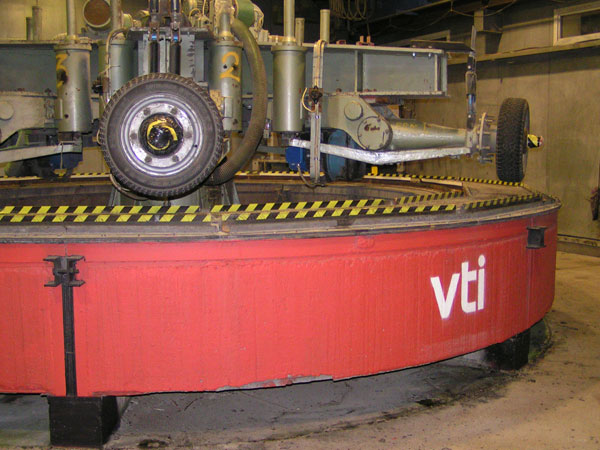In VTI’s road laboratory, test specimens of so-called ‘green’ asphalt are displayed on a bench. The asphalt is black in colour, but its properties make it better for the environment and climate than established asphalt mixtures, hence the name green asphalt. For example, the asphalt may last longer, have lower rolling resistance, provide quieter traffic and generate lower greenhouse gas emissions during production.
The test specimens are part of the project Pavement LCM (Life Cycle Management), which deals with the management of asphalt pavements from a life-cycle perspective. The project is funded by the CEDR, a consortium of European road authorities. The aim of the project is to increase knowledge of green asphalt among those bodies responsible for road upkeep, and to provide them with methods and tools to identify green asphalt. Often, green asphalt’s most important characteristic is its durability, i.e., its lifespan.
Björn Kalman is head of research and leads VTI’s work in the project.
“There are many manufacturers offering green asphalt, but the uncertainty surrounding its lifespan and the definition of what constitutes green asphalt makes it difficult for road authorities to demand that this type of asphalt be used,” says Björn Kalman. “The dilemma is that we do not yet have any historical data from test roads, for example, and it is therefore difficult to make calculations and models of how long they can be expected to last in different climates and traffic environments.”

Photo: VTI.
This is where VTI’s expertise and the test specimens in the road laboratory come into play. VTI has tested various modifications of two common types of asphalt, SMA (stone mastic asphalt) and porous asphalt, to achieve properties that could make them greener alternatives. Both types have additives such as fibres or polymer-modified bitumen to make them last longer. The ABS mixtures also partly consist of recycled asphalt.
“In addition to testing specimens, we also laid the same material as a pavement in our test road machine, where we can simulate several years of traffic under different climatic conditions. In the test road machine, passenger car wheels are driven at up to 70 km/h on the pavement, allowing us to see how a pavement is affected by traffic over a longer period of time. There may be wear, raveling , deformations and cracks in the pavement.”
The test results were compared with the known lifetime of conventional asphalt pavements to see if the green alternatives perform better or worse.
“The test results provide answers, but the answers mean different things to different countries,” says Björn Kalman. “Some failure types are common in some countries but not in others. This may be due to the climate, but also to the composition and volume of traffic. Therefore, the same pavement can have different lifetimes in different countries, so there is still a lot of work to be done before we have guidelines and decision support that apply for everyone.”
Text: Hillevi Ternström/VTI.
Translated by: CBG Konsult & Information AB.
Contact

Björn Kalman
bjorn.kalman@vti.se
VTI, Swedish National Road and Transport Research Institute
Sweden






Follow us: